|
|
|
 |

 |
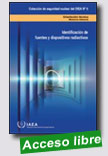 |
Identificación de fuentes y dispositivos radiactivos IAEA Nuclear Security Series, 2009, 146 p.
This manual has been produced as part of the IAEA’s Action Plan for the Safety of Radiation Sources and Security of Radioactive Material. It is intended to: assist in the recognition and identification of objects thought to be radioactive devices, sources and transport packages; provide instruction on what to do and how to obtain further help; enhance awareness of the existence of radioactive devices, sources and transport packages; and provide information on the International Catalogue of Sealed Radioactive Sources and Devices through
|
regulatory authorities in IAEA Member States. It will also help in identifying sources involved in events that are reported for inclusion in the IAEA’s Illicit Trafficking Database.
Extraído de:
http://www-pub.iaea.org/MTCD/publications/PubDetails.asp?pubId=8040
|
 |
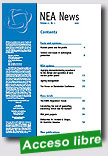 |
NEA News 2009 Volume 27
Nuclear Energy Agency (NEA), 2009, 40 p.
NEA News is the professional journal of the NEA. It features articles on the latest nuclear energy issues concerning the economic and technical aspects of the nuclear fuel cycle, nuclear safety and regulation, radioactive waste management, radiological protection, nuclear science and nuclear legislation. Each issue provides facts and opinions on nuclear energy, an update of NEA activities, and a brief presentation of new NEA publications and other NEA news. |
Extraído de:
http://www.nea.fr/html/pub/pub-annual.html
|
 |
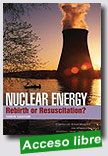 |
After several decades of disappointing growth, nuclear energy seems poised for a comeback. Talk of a “nuclear renaissance” includes perhaps a doubling or tripling of nuclear capacity by 2050, spreading nuclear power to new markets in the Middle East and Southeast Asia, and
developing new kinds of reactors and fuel-reprocessing techniques. But the reality of nuclear energy’s future is more complicated. Without major changes in government policies and |
aggressive financial support, nuclear power is actually likely to account for a declining percentage of global electricity generation.
Projections for growth assume that government support will compensate for nuclear power’s market liabilities and that perennial issues such as waste, safety, and proliferation will not be serious hurdles. Before embarking on such a path, policy makers need to achieve greater
certainty across a wide range of issues. In the meantime, all possible efforts should be made to minimize the risks of any nuclear expansion that might occur. These include strengthening the rules of nuclear commerce and transparency, deemphasizing the element of national prestige
with respect to nuclear energy, undertaking clear-eyed assessments of all available options for generating electricity, and limiting the acquisition of sensitive nuclear technologies like uranium enrichment and spent-fuel reprocessing.
Extraído de:
http://www.carnegieendowment.org/publications/index.cfm?fa=view&id=22749
|
 |
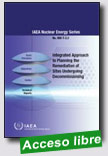 |
|
Extraído de:
http://www-pub.iaea.org/MTCD/publications/PubDetails.asp?pubId=7992
|
 |
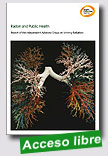 |
The Advisory Group on Ionising Radiation advises the Health Protection Agency on the biological and medical effects of ionising radiation relevant to human health. The Advisory Group set up a Subgroup on Radon Epidemiology, with a remit to review the evidence of the effects of exposure to radon and its decay products on health, as relevant to the population of the UK. This is the report prepared by the Subgroup on Radon Epidemiology. |
Extraído de:
http://www.hpa.org.uk/webc/HPAwebFile/HPAweb_C/1243838496865 |
 |
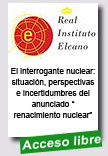 |
El interrogante nuclear: situación, perspectivas e
incertidumbres del anunciado “renacimiento nuclear” Real Instituto Elcano (ES), Junio 2009, 46 p.
Después del fracaso económico y social de los años 70 y de no haber podido resolver satisfactoriamente en todos estos años sus múltiples problemas, la industria nuclear iba camino de una lenta pero inexorable agonía. Sin embargo, la necesidad de reducir las emisiones de CO2, el previsible declive de la producción de combustibles fósiles y el continuo incremento de la dependencia energética de los países más avanzados han reavivado la opción nuclear, hasta el punto de convertirla en uno |
de los elementos centrales del debate energético mundial. En este debate, sin embargo, a menudo se soslayan las causas del abrupto fin de la primera era nuclear, pasando por alto que algunas de ellas siguen vigentes, y que por tanto podríamos asistir a una repetición de lo ocurrido décadas atrás. Si este anunciado renacimiento nuclear acabara por no materializarse a una escala significativa, podríamos encontrarnos de nuevo ante una errónea asignación de recursos económicos y energéticos que dificultaría enormemente la eventual consecución de un sistema energético robusto y sostenible. Por ello, ante las inciertas perspectivas que presenta el tan anunciado “renacimiento nuclear”, y puesto que todavía no hay urgencias que nos condicionen, en el caso español parece aconsejable seguir una estrategia de wait and see, al tiempo que vamos descarbonizando nuestro sistema energético y nos preparamos para la eventualidad de un estancamiento, o incluso un declive definitivo, de la opción nuclear a nivel global.
Extraído de:
http://www.realinstitutoelcano.org/wps/portal/rielcano/contenido?
WCM_GLOBAL_CONTEXT=/Elcano_es/Zonas_es/DT32-2009
|
 |
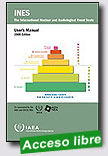 |
INES, the International Nuclear and Radiological Event Scale, was developed in 1990 by experts convened by the IAEA and the OECD Nuclear Energy Agency with the aim of communicating the safety significance of events. This edition of the INES User’s Manual is designed to facilitate the task of those who are required to rate the safety significance of events using the scale. It includes additional guidance and clarifications, and provides examples and comments on the continued use of INES. With this new edition, it is anticipated that INES will be widely used by Member States and become the worldwide scale for putting into proper perspective the safety significance of any event associated with the transport, storage and use of radioactive material and radiation sources, whether or not the event occurs at a facility.
|
Extraído de:
http://www-pub.iaea.org/MTCD/publications/PubDetails.asp?pubId=8120
|
 |
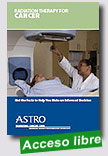 |
Radiation Therapy for Cancer
American Society for Radiation Oncology, 2009, 24 p.
This booklet was written for people exploring radiation therapy as a treatment option. Radiation, alone or in combination with other cancer therapies, can be used to successfully treat many different types of cancer.
Learning you have cancer can bring on a flood of feelings and concerns. Finding out as much as you can about your disease and ways to treat it can be overwhelming and confusing. As you prepare for treatment, it may help to learn about your treatment options and what you may experience.
Radiation therapy techniques and procedures may vary among different doctors, hospitals and treatment centers. Be sure to ask questions if the advice of your doctor is different from what you read here, find on the Internet, see in other publications or hear on the news.
Your care is individually tailored for you by your team, and there is no way to describe the infinite combinations of therapies given to patients in this type of brochure. Rather, presented are some general themes and principles for your information. |
|
 |
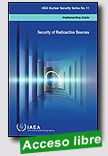 |
There are concerns that terrorist or criminal groups could gain access to high activity radioactive sources and use these sources maliciously. The IAEA is working with Member States to increase control, accounting and security of radioactive sources to prevent their malicious use and the associated potential consequences. Based on extensive input from technical and legal experts, this implementation guide sets forth guidance on the security of sources and will serve as a useful tool for legislators and regulators, physical protection specialists and facility and transport operators, as well as for law enforcement officers. |
Extraído de:
http://www-pub.iaea.org/MTCD/publications/PubDetails.asp?pubId=8113 |
 |
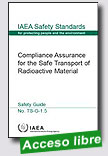 |
Compliance Assurance for the Safe Transport of Radioactive Material
IAEA Safety Standards Series, 2009, 124 p.
This Safety Guide is intended to assist competent authorities in the development of compliance assurance programmes concerning the transport of radioactive material. It also provides guidance to applicants, licensees and operating organizations for their interactions with regulatory authorities. |
| Extraído de:
http://www-pub.iaea.org/MTCD/publications/PubDetails.asp?pubId=8025
|
| |
|
|
|
|
|
|
